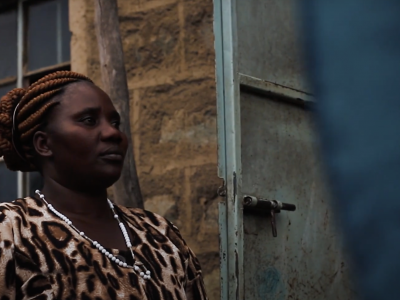
Is education a hidden shortcut from crisis to stability?
The post-2015 education agenda must fully integrate itself into the humanitarian and peacebuilding agendas if it is to fully harness the potential of education for long-term stability and development.
2015 marks the final year of both the Millennium Development Goals and the Education For All (EFA) Framework for Action. The EFA Framework, agreed in 2000 at the World Education Forum in Dakar, was a global commitment to quality education for all by 2015. Now that we are there - the results are mixed at best.
The barriers to education for all in conflict and fragility
Despite remarkable progress made in the early 2000s, 58 million children of primary school age are still out of school today. Half of these live in conflict-affected countries. In such contexts, the challenges faced in education reflect and even perpetuate the fragility of the state, with governments unable or unwilling to provide access to education and other social services. In deteriorating security situations, schools may become targets themselves, or be used for military purposes.
At the same time, conflict can bring economic stress to households, resulting in a prioritisation of child labour over education. With less enrolment, participation and completion of schooling conflict risks the creation of ‘lost generations’, with long-term consequences for development.
Poor quality or unequal access to educational services may contribute to grievances that underlie conflict. They can used as a propaganda tool for social control, reinforce prejudice and intolerance, and be exploited by violent groups to recruit young people - a tactic used by Boko Haram.
However, if education is of good quality and equally distributed, it can yield tangible ‘peace dividends’ and offer opportunities to mend social fractures - allowing states to (re) build their legitimacy.
Education support should be stepped up in humanitarian programmes...
In 2010, the UN General Assembly called for increased attention to education during emergencies, and the UN Global Education First Initiative sets a target of 4% of humanitarian aid to be spent on education. The Global Partnership for Education increasingly prioritises conflict-affected countries, and UNICEF’s Schools as Zones of Peace Programme in Nepal is a good example of how security can guarantee access to education during conflict.
Despite such efforts, education continues to be mostly off the radar of donors who engage in fragile environments as it is not considered a lifesaving activity. Consequently, humanitarian aid for education has remained far below the 4% target set by the Global Education First Initiative - it only reached 1.4% in 2012. This lack of resources limits the extent to which education can be addressed during crises, especially where more long-term development activities are yet to be implemented.
....and in peacebuilding and statebuilding programmes
Responding to urgent needs should be balanced against long-term perspectives. This brings political dilemmas in situations where social order and power relations are often contested and where the provision of basic services can be part of political strategies to buy support. That is why political economy analysis is essential to ensure a ‘conflict-sensitive’ support to education.
Education can proactively contribute to peace through post-conflict transformation, beyond ‘doing no harm’. This means systematically integrating education into wider peacebuilding programmes - both through the realization of early peace dividends and responding to the impact of conflict through, for example, accelerated learning programmes for Disarmament, Demobilisation and Reintegration.
Education for peacebuilding also implies longer-term support to education sector reform, while strengthening community initiatives can lay the foundations of more ‘endogenous’ peacebuilding processes – that is, a more bottom-up approach at the community level with greater ownership by citizens themselves.
At the policy level, the potential of education to help peacebuilding has been underscored by the UN Secretary-General and the New Deal for Engagement in Fragile States. Some donors like the EU and Norway now try to link up education with conflict prevention and peacebuilding. Yet, most actors still fail to create such synergies because their complex interrelationship remains insufficiently understood. The results are fragmented and disconnected approaches that fail to tap into the potential of education to promote social cohesion and stability.
This inevitably affects funding. A study of ODA flows conducted by the CAERUS Consortium revealed that support to education was less of a priority in fragile states than in other beneficiary countries between 2005 and 2013. Only 25 out of 192 projects funded by the UN Peacebuilding Fund (up to 2012) addressed administrative and social services because activities related to security and political processes were seen as a higher priority.
The road ahead
The EU is leading by example, increasing its funding to education in emergencies through the Children of Peace Initiative. While other humanitarian players need to follow suit, even here further steps are needed by the EU to link this initiative with broader peacebuilding agendas and governance reforms that can overcome EU institutional divides, providing a more coherent and comprehensive approach by the EU.
2015 is an opportunity for progress. In May, world leaders will convene in Incheon, South Korea to define an education agenda beyond 2015. These discussions are also bound to feed into the UN Sustainable Development Goals (SDGs). If such an agenda is to fully harness the potential of education for long-term development and stability, it must be crisis-sensitive and integrated, as much as possible, with humanitarian and peacebuilding ambitions.
Achieving quality and equitable education for all is, in the end, as much a development objective as it is a humanitarian and peacebuilding goal.
The views expressed here are those of the authors, and not necessarily those of ECDPM
Funding for this blog was made available by the European Union’s Seventh Framework Programme for research, technological development and demonstration under grant agreement no. 607960



